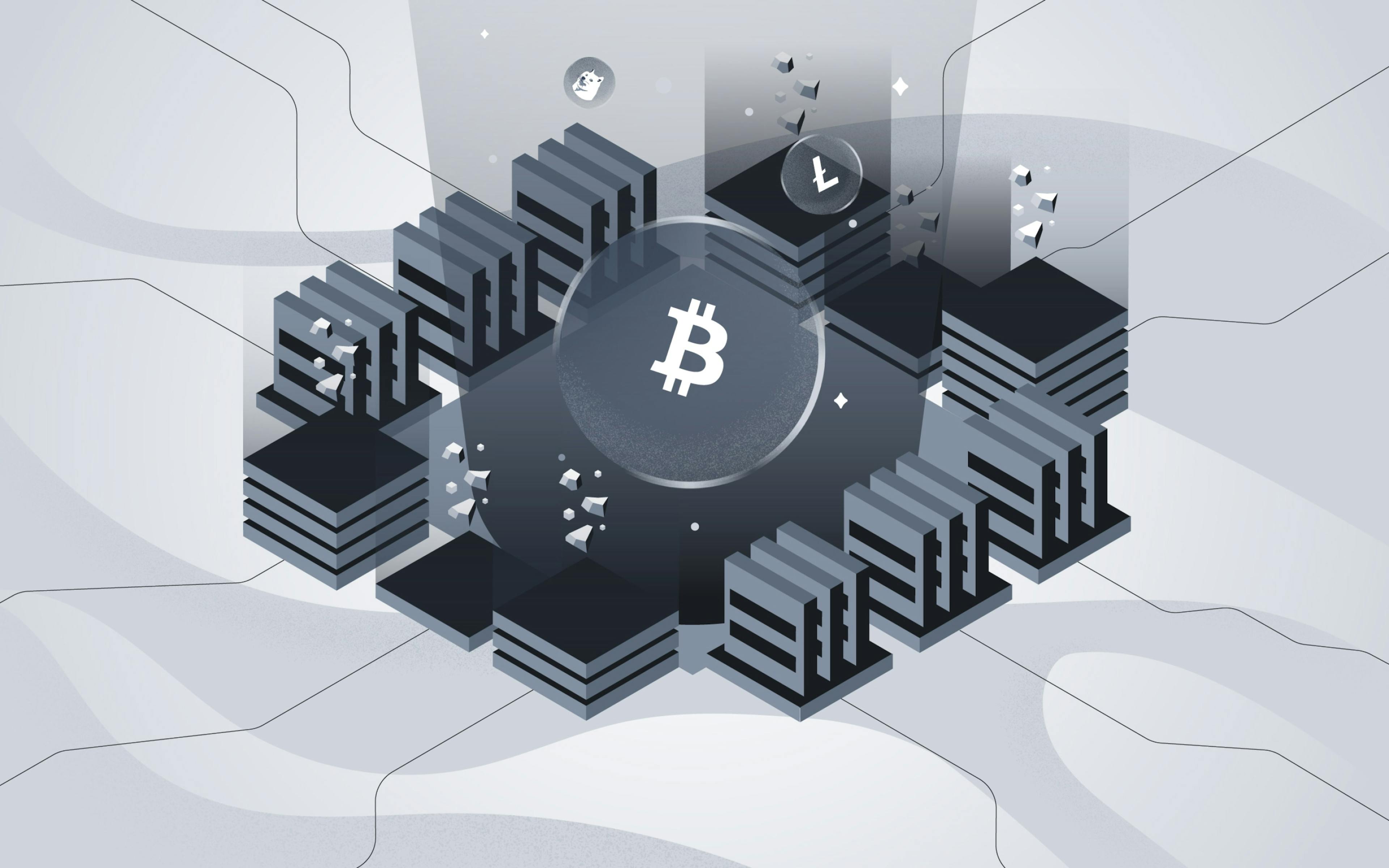
What is crypto mining?
If we envision a typical mine, we likely see tangible assets being extracted from a physical space. However, this may leave us wondering how an intangible asset like cryptocurrency can be mined. Here’s how.
Crypto mining isn’t so much a process of extraction as it is one of creation, which requires solving a complex mathematical puzzle via advanced computer hardware and technical expertise. Miners receive cryptocurrency rewards for their efforts in a process called proof-of-work. This leads to the mining of a block, which is then appended to the end of the blockchain.
Blockchains are a series of transactions grouped in blocks, with each added to the end of all blocks before it. Once a block is added to the end of other blocks, it cannot be reversed, and the transactions within it are finalized. Miners compete with their peers for the right to validate transactions and add a new block.
The crypto mining system incentivizes security. Miners must successfully and correctly validate transactions, meaning that these individuals safeguard the same cryptocurrency they strive to receive as payment.
Are all cryptocurrencies mined?
An important piece of information to keep in mind is that many cryptocurrencies aren’t mined including the second largest in ether. Cryptocurrencies that don’t mine use other mechanisms to secure the network, each with their own set of tradeoffs.
How does crypto mining work?
Now that we know the basics of crypto mining, let’s understand its chain of events.
Each block of transactions comes with a hash that needs to be solved. A hash is a fixed-length digital signature representing (and securing) a piece of data. Miners race to decipher a hash on a transaction before their counterparts, and if they succeed they receive a reward. If they don’t get it first, they will get nothing!
Presently, competition is fierce, and it’s only increasing in intensity as mining hardware is becoming advanced and equations are getting harder. The equations were tough enough to track in the first place and required a lot of (computer-assisted) guesswork. There is no other way to mine besides guessing solutions to the puzzle and checking if they are correct on a massive scale. Thus, the secret to becoming an excellent miner is being backed by enough computing power to guess the most answers faster than everyone else.
Is crypto mining profitable?
While cryptocurrency mining can be profitable, it comes at a hefty price, costing miners thousands of dollars in hardware and electricity. In fact, the price of mining hardware is similar across the globe, which is why to have a competitive edge over other miners, an operation must have access to low-cost electricity.
In the case of mined cryptocurrencies such as Bitcoin, individuals can engage in mining themselves through other methods such as cloud mining, which eliminates the need for them to purchase expensive hardware and instead allows them to leverage existing servers. There are other options for those who want to team up with others to get more mining power. Potential miners could join an existing operation known as a mining pool, which is a group of individuals who mine together via processing power over a network and share rewards based on their contributions.
Another thing to consider is that miners also charge transaction fees. Bitcoin believers think that as mining subsidy decreases, transaction fees will increase, which also accrues to miners. On the other hand, many Bitcoin non-believers think the mining subsidy going to zero will reduce security to the point where it becomes vulnerable to attack.
Is crypto mining bad for the environment?
Bitcoin mining uses large amounts of electricity, which many argue adversely impacts the environment. Some argue Bitcoin miners use more electricity than some countries such as Argentina, and that much of this energy comes from dirty sources. Proponents argue that mining helps stabilize grids, gives opportunities to people in remote regions to earn a living where there are few other options, that much of the electricity used would have otherwise been wasted, and that the source of mining hashpower is becoming more renewable every year.
Presently, of all the validation methods available on the market, proof-of-work is the most common and is responsible for the most carbon emissions. Having said that, the Crypto Climate Accord, an initiative to reduce carbon emissions produced by crypto mining, is inviting individuals to contribute to this cause and save the environment. Over 250 individuals have signed up to decarbonize the industry by 2040.
Final considerations
To summarize, mining is what gives Bitcoin and other proof-of-work cryptocurrencies security and trust, while opening up a new industry worth billions.
Here are a few factors that potential miners must consider.
Legality: Regulations on crypto mining depend on the country of residence. Miners should check the regulatory policies and protocols of their countries. For example, Bitcoin mining is legal in most countries but not across all US states.
Taxation: Besides exorbitant expenses, the rewards miners earn can be taxable, depending on their tax residency. Even if they exchange or sell these rewards, they have to pay a tax. In simple terms, this reward is equivalent to ordinary income upon receipt.
For more information about the world of cryptocurrency, subscribe to the Worldcoin blog.